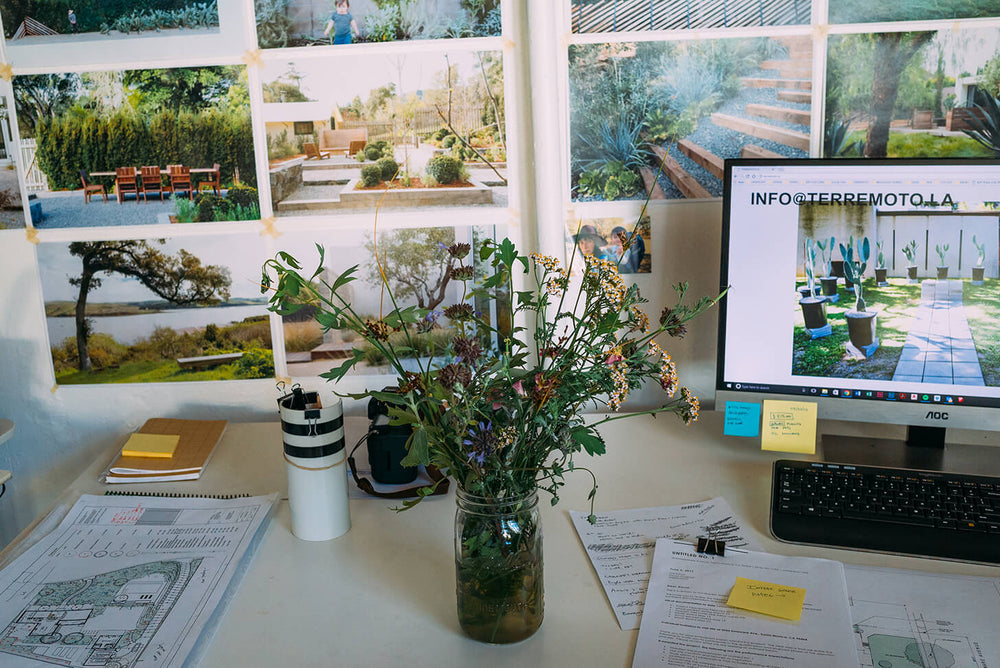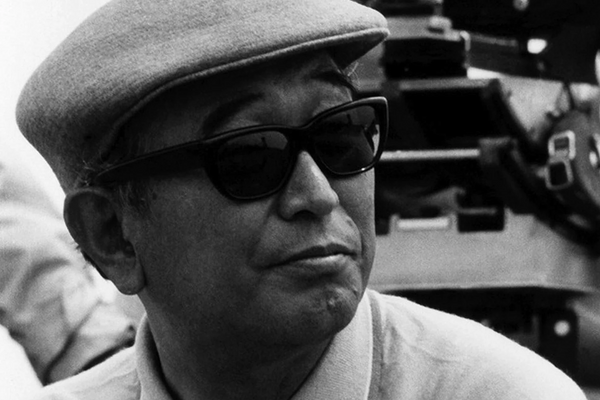It’s a small studio on the corner of a quiet street in the hills of Echo Park. Next door is a balloon shop, a bodega, some bungalows. A burnt out neon marquee above the entrance reads, in a mishmash of Japanese alphabets, GIGANTIC SCULPTURE / TEAPOT FURNITURE / WHAT, ME WORRY? – possibly installed by Peter Shire, the Memphis Group artist and Old Master of these boho hills.




Inside, computers and shovels, soil and stone samples, potted plants and hanging plants. Collaged walls of photographs and construction drawings, long thin picture books and small thick reference books. Pictures everywhere — projects, plants, plans — on the walls and desks and tables and every other flat surface you can see. A mix of real things and things that capture the real.
Perhaps we are obsessed with images and speak in them because they are as close to the real as we can get sometimes. Every one of the images in this space represents something living, or bound to be – built landscapes and future scenes. The men and women working in this studio are practitioners of dirt, curators of living things, playing in the real.




Terremoto designs and builds outdoor spaces where people go, where they meet, where they rest – backyards, frontyards, courtyards, walkways, gardens, hillsides. Theirs is an egalitarian practice, with a hierarchy of course, but designed as a democracy where everyone has a say, like a Wes Anderson film with casual Latin name-dropping of plants and cynically clever comments about what will be value engineered next.
There’s a disconnect between what we think of landscaping — picking out plants and shoveling dirt, weeding and watering the garden, replacing the dying with the nursery fresh — and what Terremoto does. They envision theory through the prism of practice, using isms to define how to get our hands dirty and build landscapes never before fulfilled. Their work is inherently complex and yet simple in appearance, both restrained and wild, backward and forward looking. They call it horticultural semiotics – “a way of looking at the panorama of horticulture in Los Angeles, layering botany, culture, and development to understand why this city looks the way it does.”




What that means is you can’t separate the flowers and plants and trees of Los Angeles from the way we settled it, built it, live in it. We are continually curating nature, and is that so strange if we can curate art, or experiences, or our pasts. Terremoto works to peel away the layers of LA’s built and natural landscapes, exploring the city at different stages of its development — when it was native, as it was dreamed up as an oasis, once it grew into a megapolis — from live oaks to palm trees. It is LA as an invasive species, as a wild thing beyond human control, as a “tabula rasa, a clean slate, a place where we're gonna impose our vision.”
As the people of Terremoto tell it, there are basically three parts to every project: site / client / plants. The exact combination of conditions cannot be replicated; it will only happen once and you need to make the most of it. In the same way, our Los Angeles is a construct of geography / history / people. This is the view we all share.




It’s a beautiful place really; yes, there are the highways and homeless, the strip malls and smog, but where else does mountain turn into ocean floor, river to sea, desert to sand. Some will sing the praises of Sydney, some say Rio, but my money’s on LA. It’s just got more going on, more to see, more to discover. It’s still wild in a way. “The whole city is our garden,” Terremoto says, but also “the wilderness of the city intrudes into the garden.”
One of them mentioned that the only way to document their work is to come back a year after everything has been sited and planted, once it has had time to mature. Everything is growth and decline, adaptation and intervention. It all keeps changing and we have no sense of the scale of things because they are measured in a kind of time far greater than a human life can count. Terremoto works on such a scale – Los Angeles is, as the Navajo named Monument Valley, a “land of room enough and time enough.” Makes it worth dealing with a couple earthquakes here and there.

See more of Terremoto's work here


